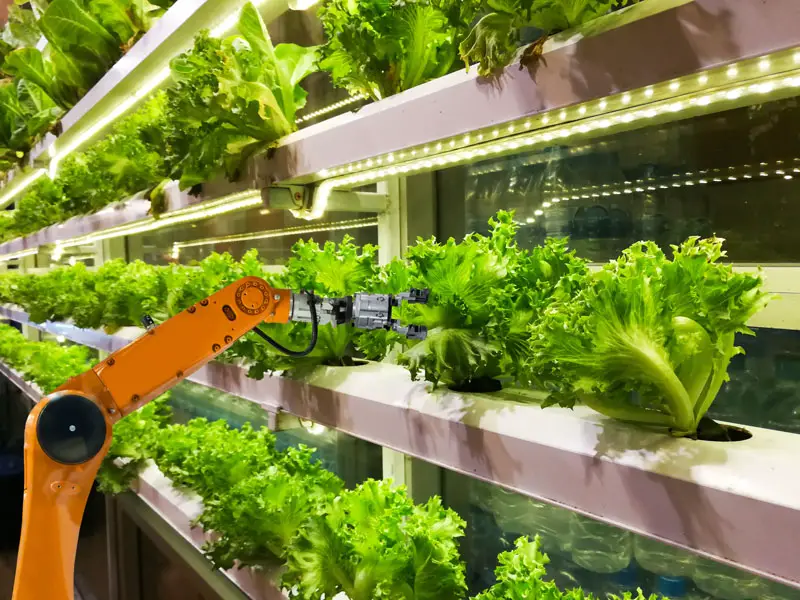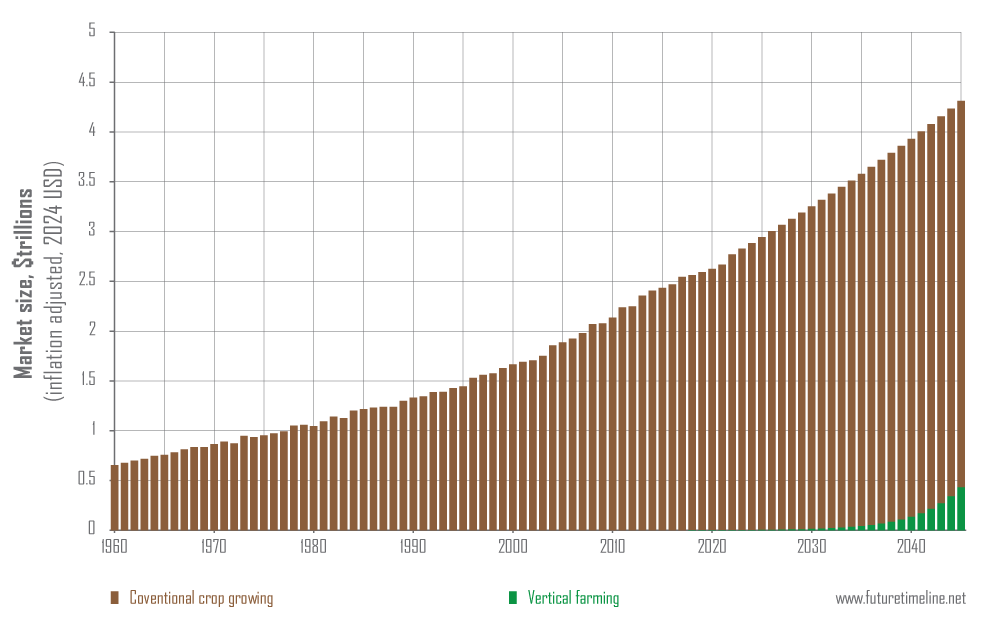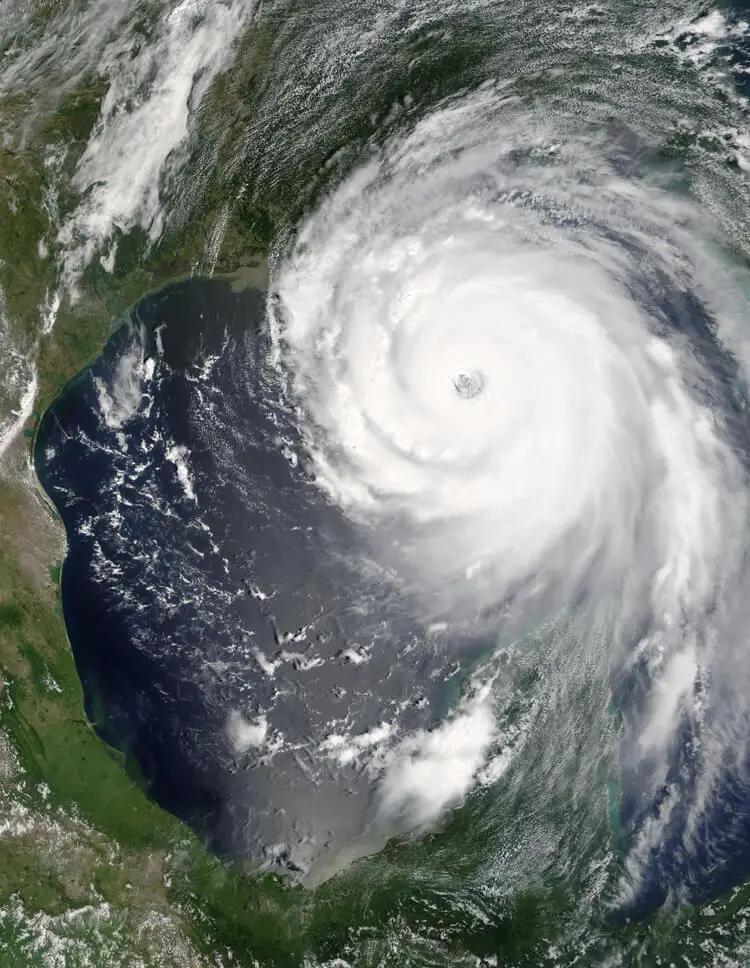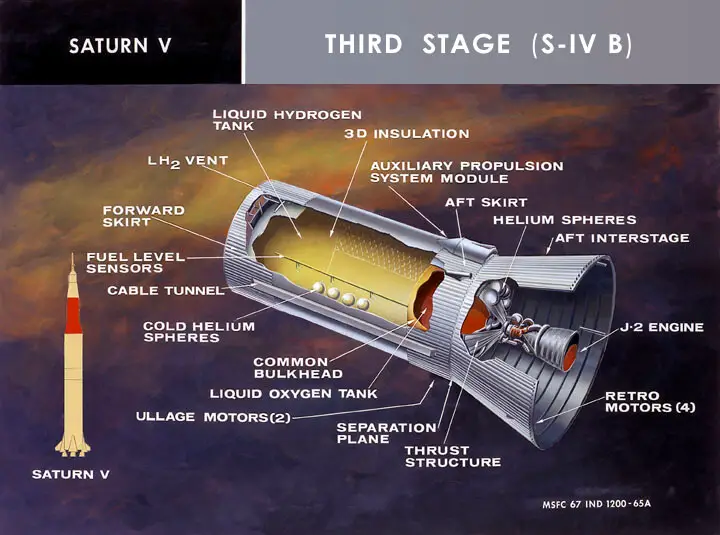
|
|
|
|
|
|
2045
An inflection point for human-AI interactions
By 2045, artificial intelligence (AI) has reached a level of development that is beginning to reshape human society and culture in profound ways. This year marks the date of the so-called technological singularity postulated by futurist Ray Kurzweil.* Although Kurzweil tended to be overly optimistic in a number of specific future predictions,** his basic premise of exponential growth in technology proved to be accurate.
Speculation abounds during this time, much like the build up to Y2K in 1999, the Mayan calendar predictions in 2012, and other such dates. The Internet is abuzz with rumours and singularity-related memes. While most of this talk is unfounded hype – with life carrying on as normal for most people – the "normal" of 2045 is changing at a pace that would seem alarmingly rapid to observers from earlier decades. The leaps in technology from 2020 to 2045 have been much more noticeable than those during the same timespan from 1995 to 2020. The leaps now anticipated from 2045 to 2070 appear even greater still.
Robots, for example, are now widespread in everyday society, their numbers having expanded by orders of magnitude in preceding decades.** They are ubiquitous in factories, farms and industrial environments, eliminating much of the traditional manual work of humans.** Additionally, these machines have gained visibility in more public settings, giving a futuristic look and feel to many cities, towns and suburbs. Similar to how touchscreen smartphones moved from science fiction to reality some 40 years earlier, these robots are quickly becoming accepted as a routine part of life. This includes fully automated waste collection in streets and parks, robotic cleaners in offices and hotels, robot security patrols, robots for grocery and other deliveries. Such applications had begun to emerge during the 2010s. Following exponential growth, they are a common sight by 2045. Furthermore, bipedal humanoid form factors account for a growing percentage of newly deployed units, particularly in homes and other indoor settings.
With a ten-thousand-fold improvement in computing power compared to 25 years previously,* robots in 2045 can perform a multitude of tasks independently and without human supervision.
Many years previously, advances in deep learning and natural language processing had made it possible to generate portions of text indistinguishable from a human writer, which led to chatbots passing the Turing test, a major landmark in the field. Alongside this natural language processing, AI gained the ability to master real world environments and an increasingly diverse range of 3D objects. Whereas earlier robots had been limited to "fixed" movements, the generation now emerging had more dynamism and flexibility – adapting to new situations and solving more and more problems. These capabilities received a boost from 5G and then 6G wireless communication and the exponentially growing amounts of data being gathered from sensors, allowing robots to learn from their experiences and disseminate knowledge to each other.
In the past, limited processing power meant that robots would often spend minutes identifying an object or situation and the interaction required. By 2045, however, these calculations can be performed in near real-time, enabling a much more human-like response. Although a few technological hurdles remain, this is now almost undeniably artificial general intelligence (AGI).*
In addition to their cognitive abilities, some of the latest robots have gained extremely lifelike appearances. The most advanced models are now crossing the 'Uncanny Valley', with faces and bodies that appear almost – but not quite entirely – like a real person.* This bizarre and disturbing phenomenon is fuelling demand for more natural-looking facial expressions and limb movements. The problem is solved by user feedback (the robots can auto-detect a person's emotional response – good or bad), combined with techniques such as motion capture, in a process that is somewhat similar to generative adversarial networks. These subtle iterations of data are used to determine the "best" appearance and movement, allowing gradual optimisation in successive generations of machines. 3D printed bones, amounting to all 206 in the human anatomy, along with new materials developed for more flexible skin and muscles, as well as more realistic eyes and teeth, help to iron out the remaining issues.

These cutting-edge prototypes are rarely seen by average members of the public, being mostly restricted to government, corporate, and research institutions, households of the rich and famous, TED talks and so on. Less advanced models are now relatively common in society, however. They are popular for those in upper-middle income brackets and are comparable in cost to a second car or similar major purchase. Their roles include household chores such as cleaning, cooking and tidying, as well as looking after children and elderly family members.*
Although typically geofenced within the owner's property and/or local neighbourhood, these androids can also be seen further afield. They serve as excellent training partners on sports grounds, running tracks, parks and other leisure settings. Being able to replicate movements, it is possible to play against the recreation of a tennis champion, for example – or fight against a famous boxer. With the right motion capture, an owner can even play against a version of themselves if they desire.
Androids had emerged in the sex industry some decades earlier, though in rudimentary forms with limited functionality. The sex robots of 2045 are incomparably more sophisticated and engaging, to the point that many customers (mostly men) are forming long-term relationships with machines. Human-robot marriages are legalised in some jurisdictions in the latter half of this decade.**
There are many moral, ethical, legal, economic and philosophical issues around the proliferation of robots in society – all of which contribute to a growing sense of "future shock" around this time.
Other singularity-like effects are emerging in 2045. This includes the ever more rapid progress of brain-computer interfaces, enabling deeper integration of AI and human intelligence, going beyond medicine and into consumer uses such as gaming and VR, as well as education. On-person technology in general is becoming exquisitely compact and miniaturised – such as bionic eyes nearing human levels of visual acuity* and single-chip devices now approaching the size of individual blood cells.* Meanwhile, the option to extend one's lifespan appears to be a realistic prospect, thanks to recent success in human rejuvenation trials.
The rapid growth of AI and robotics, alongside many other disruptive technologies, is occurring at a time of geopolitical turmoil, as the world grapples with a convergence of social, economic and environmental issues the likes of which have never been seen before. This volatility and the sheer pace of change is creating a "mental blur" for many people in 2045 – a sense that humanity is reaching a pivotal moment in history.
10% of crop production is from vertical farming
Vertical farming, the practice of growing crops in vertically stacked layers, first emerged as a concept in 1999. Dickson Despommier, an environmental science professor at Columbia University, worked with students to design a "skyscraper farm" that could feed up to 50,000 people. Although their particular design would remain on the drawing board, it successfully popularised the idea.
Sky Greens, a company in Singapore, began developing a prototype facility in 2009. Consisting of multi-layered troughs in rotating A-frame structures measuring 9 m (30 ft) in height, this became the world's first commercial vertical farm when officially launched in 2012, producing 0.5 tonnes of vegetables each day.
Over the next decade, startups emerged in numerous other countries, introducing new techniques and a wider variety of plant species. Vertical farming became a billion-dollar industry by the late 2010s, with forecasts of rapid growth in the 2020s and beyond.
As a radical and disruptive innovation, vertical farming offered some major advantages over conventional crop growing. These included a remarkable efficiency in water use, conserving up to 95% more than traditional agriculture. This aspect had potential to be transformative in arid regions and cities, where water scarcity posed significant challenges. Additionally, the indoor nature of vertical farms enabled year-round production regardless of external climate conditions, resulting in higher yields per square metre. Furthermore, these contained, and highly controlled environments removed the need for costly and toxic pesticides and herbicides – a sharp contrast to the 4 megatonnes of pesticides used in traditional agriculture each year.
With facilities springing up in urban areas, vertical farming shifted food production closer to consumers, reducing the food miles associated with transporting produce to markets and therefore lowering both air pollution and carbon emissions. It also reduced the dependency on complex supply chains affected by vulnerability to disruptions from climate change or geopolitical tensions. By utilising less land, it also mitigated the loss of natural habitats and biodiversity.

The use of advanced technologies in vertical farming allowed for precise control over water, nutrients, and light, ensuring that plants received exactly what they needed for optimal growth. This accuracy reduced waste and increased the likelihood of successful harvests. Some companies began to integrate robotics into their operations, for even greater efficiency.
Despite these advantages, vertical farming remained for many years a niche and extremely tiny segment of the overall food market. The high initial setup and operational costs – primarily due to the need for advanced technologies and energy-intensive lighting systems – prevented its wider adoption. Additionally, it had a somewhat limited scope, with only certain types of crops able to be grown, primarily leafy greens and herbs. Expanding the range of produce to include more energy-dense and staple crops would require further innovation and investment.
Improvements in both cost and the range of plant types available led to an exponential scaling up during the 2020s and 2030s. Driven by a combination of government incentives, worsening crop failures on traditional farms due to accelerating climate change, and the rising consumer demand for more sustainable food options, the vertical farming market achieved a compound annual growth rate (CAGR) of more than 25% throughout this period.*

As the global population continued to swell, exceeding 9 billion by 2037, the pressure on resources and the natural world became ever greater. With more people than ever living in cities,* the societal shift from rural to urban areas raised further concerns about the ability to meet food demand, due to the changing landscape of agricultural employment. Vertical farming, now entering the mainstream, gained widespread recognition as a potential solution.
By 2045, the worldwide gross value of crop production has reached $4.3 trillion, of which more than 10% is from vertical farming, a ten-fold increase compared to a decade earlier. A new generation of entrepreneurs – younger and more technologically savvy than those in traditional farming* – has built an industry worth nearly half a trillion dollars, taking market share from older, established companies.
A significant and growing number of the world's fields, cultivated over the centuries and millennia, now face abandonment or repurposing to other uses – such as rewilding, nature reserves, recreational spaces for public use, or sites for renewable energy projects. This shift necessitates support and adaptation strategies for rural communities, requiring government intervention or novel business models to ensure their sustainable transition and livelihood preservation.
Vertical farming and its associated technologies are one of the biggest revolutions in agriculture since Neolithic times. Many of the latest vertical farms can now produce wheat, accounting for 20% of the calories and proteins in a typical human diet, with a yield that is hundreds of times more efficient than traditional farming methods.* A substantial fall in the cost of LED lighting has been a major factor in the affordability of these systems (see below).
Advances in LED and laser systems
By 2045, light-emitting diodes (LEDs) and lasers are much cheaper, better, and more energy efficient than in earlier decades.* Their progress has followed the lighting industry's equivalent of Moore's Law – known instead as Haitz's Law – which states that each decade, the cost-per-lumen plummets by 90% while the output of a packaged LED climbs by a factor of 20. This has led to improvements in a number of industrial and consumer applications.
Among the most important developments has been the widespread deployment of LEDs that output deep, ultraviolet light (UV), able to quickly kill bacteria, viruses, and other microorganisms. When fitted to ventilation systems and air conditioners, for example, they can sterilise 99.9% of the air sucked in and then emitted into a room.* These systems are now so common in offices, homes, and other interiors that the risk of new pandemics is significantly reduced. UV LED is also now the dominant technology for purifying water.
In addition to these public health benefits, video projection has improved in every way possible. Consumers in 2045 can purchase the equivalent of a circa 2020 cinema-quality digital film projector. For just a few hundred dollars, machines are now available that can project 8K-quality colour footage onto the outside wall of a house or other large surface.
Similarly, the latest smartphones have a small laser emitter, able to project high-quality images and video footage onto a wall. These consume so little energy that a full-length movie can be watched on a single battery charge. In other words – wherever a user is, if they have a blank, light-coloured wall in front of them, they can generate a big-screen TV. They can either use a tripod or other stand, or simply prop their smartphone against something like a backpack or small stack of books to get the correct angle for the laser beam.

Homosexual discrimination has declined substantially
In 1800, more than 120 countries had laws against homosexuality. This number increased over the next century, peaking at 160 in the 1920s.* The mid- to late-20th century saw great progress in human rights, culminating in the first gay marriages during the early 2000s.*
With the floodgates now opened, many more nations began to allow same-sex couples to form civil partnerships, or full marriages, including the United States.* This trend was reinforced by the continued spread of democracy and the rule of law,* better education, and rapid societal changes wrought by the Internet and social media. Younger generations in particular were more open, liberal and willing to support such policies.**
By the mid-2040s, a clear majority of the world's countries allow same-sex marriage, while the overwhelming majority have decriminalised homosexuality. Only a shrinking minority of hard-line, authoritarian regimes – mostly in Africa and the Middle East – continue to outlaw the practice.

Background image: Tony Webster, CC BY-SA 4.0, via Wikimedia Commons
Africa transitions to 100% electric car sales
By the mid-2040s,** Africa has undergone a transformative shift in its transportation sector, with electric vehicles (EVs) now accounting for practically 100% of new car sales across the continent. This remarkable progress marks the final chapter in the global transition to electric mobility, as Africa becomes the last major region to achieve this milestone. The journey has been driven by years of strategic investments, technological advancements, and international partnerships, particularly with China.
In the 2010s and 2020s, Africa faced significant challenges in transitioning to electric vehicles. Infrastructure limitations, high costs, and the persistence of older internal combustion engine (ICE) vehicles slowed the initial adoption of EVs.
However, a rapid transformation emerged in subsequent decades, catalysed by a combination of factors. China, having established itself as a world leader in renewable energy and EV production, played a crucial role by investing heavily in Africa's infrastructure. This included the construction of extensive networks of charging stations, renewable energy grids, and battery manufacturing plants.
African governments, recognising the long-term economic and environmental benefits, introduced policies to encourage the shift to electric. These included subsidies for EV purchases, incentives for local production, and emission regulations to enable a gradual phase out of new ICE cars. Meanwhile, ongoing advances in battery technology – such as improved ranges, faster charging times, and reduced costs – made EVs more desirable and accessible to the general population.
By 2045, essentially 100% of new cars sold in African nations are electric. While older and second-hand ICE vehicles still exist, they are increasingly confined to remote areas or specialised applications, rapidly approaching obsolescence as EV infrastructure continues to expand.
This transition has resulted in transformative impacts on Africa's economy and society. While the reduced dependence on imported oil has strengthened the continent's overall economic resilience, it has brought significant challenges for countries like Nigeria, Angola, and Libya. These nations, once heavily reliant on exports to the global oil market, have faced economic disruption with a sharp downturn in demand for fossil fuels. To mitigate these effects, some oil-dependent countries have accelerated efforts to diversify their economies – investing in renewable energy, technology sectors, and sustainable industries. Simultaneously, expansion of the renewable energy sector across Africa has created millions of jobs, providing new opportunities for growth. Furthermore, Africa's cities are witnessing improvements in air quality, public health, and urban mobility, as EVs replace the noisy, polluting engines of the past.
Looking ahead, the successful adoption of electric vehicles in Africa serves as a model for other emerging economies. The continent's experience demonstrates that with the right combination of international support, government action, and technological innovation, even regions that once lagged behind can leapfrog into a sustainable future.

The Chūō Shinkansen high speed maglev route is complete
Tokyo and Osaka are now connected by a direct high-speed maglev route – the Chūō Shinkansen. This megaproject began construction in 2014, at a cost of over 9 trillion yen ($115bn). By 2027, the first trains were running between Tokyo and Nagoya,* and by 2045 the route has been extended to Osaka,** with trains travelling beneath the Japanese Alps (Akaishi Mountains). The first generation of these vehicles reached 313 mph (505 km/h), but newer and even faster designs are now in use.

Gulf Coast cities are being abandoned due to super hurricanes
The rapid growth of CO2 emissions has led to rising sea levels, a warming of coastal waters and a more volatile climate system. In the Gulf of Mexico, a new category of "super hurricane" has emerged. This is becoming a regular occurrence by now. These extreme weather events are nightmarish in scale and intensity. At their peak, winds of 200mph bring untold devastation. Trees are uprooted and hurled like matchsticks, while skyscrapers visibly sway. Storm surges and flash floods travel up rivers with surreal speed, overwhelming defences and bringing waves tens of metres high. Damage from these and various other disasters has run into hundreds of billions of dollars. A number of Gulf coast cities are being temporarily abandoned during this time, including Houston and New Orleans.**

Tianwen‑4 flyby of Uranus
Tianwen‑4 is the fourth in a series of robotic space probes developed by the China National Space Administration (CNSA). This program began in July 2020 with the launch of Tianwen-1, consisting of a Mars orbiter, lander, and rover. The mission touched down on Utopia Planitia in February 2021, making China only the third country to achieve a soft landing on the Red Planet, after the Soviet Union in 1971 and the United States in 1976.
Tianwen-2 followed in 2025. This travelled to a near-Earth asteroid known as Kamoʻoalewa, where it obtained a 100 g (3.5 oz) sample of regolith and returned it to Earth. It then continued on towards the main-belt comet 311P/PANSTARRS, arriving in 2034 and studying the object for a year.
Tianwen-3, launched in 2030, became China's first Mars sample-return mission. Two spacecraft (an orbiter/Earth-returner and a lander/ascent-vehicle) together obtained Martian rock and soil samples, returning them for more detailed analysis back in Earth laboratories.
Tianwen-4 would study the Jovian system and later Uranus, the seventh planet from the Sun. The main spacecraft used Earth and Venus gravity assists in the early 2030s, before achieving orbital insertion at Jupiter in 2035, making flybys of small moons and then studying the large moon Callisto at close range in 2038, prior to an impact on the surface.
Alongside its Jovian mission, Tianwen-4 included a separate probe, which detached from the main spacecraft and headed to Uranus. This performs a flyby of the ice giant in March 2045,* becoming only the third-ever visit to the planet. It follows a recent NASA mission in 2042 and Voyager 2's encounter in 1986.

Credit: "Uranus 2049" by Christian Antoine Joore / Art Limited (used with permission)
Apollo 12's third stage returns to Earth
In November 1969, the Apollo 12 Saturn V blasted off towards the Moon. This rocket consisted of a three-stage launching system. While the first and second stage dropped back to Earth after launch, the third stage (S-IVB) was used to propel the docked Apollo Command Module and Lunar Module into a lunar trajectory.
In 2002, amateur astronomer Bill Yeung discovered what appeared to be a 30-metre (100 ft) asteroid in orbit around the Earth. Initially, it was believed to be a second natural satellite of Earth (the Moon being the first). However, later measurements of the electromagnetic spectrum were consistent with titanium dioxide paint used for the Saturn V rockets. Back-tracing its orbit showed that the object had been orbiting the Sun for 31 years and had last been near Earth's vicinity in 1971. This seemed to suggest it was part of Apollo 14, but NASA knew the whereabouts of all hardware used for that mission – the third stage, for instance, was deliberately crashed into the Moon for seismic studies.
Another explanation emerged that it could be the S-IVB third stage for Apollo 12. NASA had originally planned to dump this spent component into a solar orbit, but an extra-long burn of the ullage motors meant the remaining propellant could not provide enough energy to escape the Earth–Moon system. Instead, this stage ended up in a highly erratic orbit around the Earth, after passing by the Moon.
Sure enough, this antique space junk, with an empty weight of 9,600 kg (20,000 pounds), would return to Earth during the mid-2040s, after drifting for over 75 years.* Objects with similar mass tend to impact Earth's surface about once every 10 years.

Total solar eclipse in the USA
A total solar eclipse occurs on 12th August 2045; the fourth longest of the 21st century. It is visible throughout much of the continental United States, with a path of totality running through California, Nevada, Utah, Colorado, Kansas, Oklahoma, Arkansas, Mississippi, Alabama and Florida. The eclipse is greatest over the Bahamas, before continuing over the Virgin Islands, Hispaniola, Venezuela, Guyana, Suriname, French Guiana, and Brazil.
The path of totality is witnessed over many major cities – including Reno, Salt Lake City, Colorado Springs, Oklahoma City, Tulsa, Fort Lauderdale, Miami, Orlando, St. Petersburg, Tampa, Nassau, and Santo Domingo. It lasts for at least six minutes along the part of the path that starts at Camden, Alabama, crossing Florida and ending near the southernmost Bahama Islands. The longest duration of totality is six minutes and 5.5 seconds, located at the coordinates 25°54.594'N 78°32.19'W, which is over the Atlantic Ocean east of Fort Lauderdale and south of Freeport, Bahamas.* A solar eclipse with a very similar path occurs in 2017.

The Boeing B-52 Stratofortress is retired from service
The Boeing B-52 Stratofortress was an American long-range, subsonic, jet-powered strategic bomber. Designed and built by Boeing, it was operated by the United States Air Force (USAF), with official introduction in 1955. Capable of holding up to 32,000 kg (70,000 lb) of weapons, it had a typical combat range of more than 8,800 miles (14,080 km) without aerial refuelling. A total of 744 of the aircraft were built, with the last one delivered in 1962.
The strength, reliability and versatility of the B-52 allowed it to become the backbone of the U.S. Air Force and a veteran of numerous wars. It played a key role during the Cold War – carrying nuclear weapons for deterrence and standing on alert, ready to conduct "doomsday missions" if necessary; though it only ever dropped conventional munitions in combat. During the 1960s, it performed large numbers of conventional strikes in Southeast Asia, pounding enemies with massive firepower.
While some variants were retired, the B-52 continued to see active service for many more decades, undergoing a series of upgrades and modernisations with new avionics, equipment and weapons. B-52 strikes were an important part of Operation Desert Storm (1991) and Desert Strike (1996), the latter including a 34-hour, 16,000-mile round trip from Guam – the longest distance ever flown for a combat mission. B-52s also contributed to Operation Enduring Freedom in Afghanistan/Southwest Asia (2001) and Operation Iraqi Freedom (2003).
Superior performance at high subsonic speeds and relatively low operating costs continued to keep the B-52 in service, despite the introduction of more advanced aircraft. As of 2015, 58 were in active service with 18 in reserve. After being upgraded again, it would serve until 2045 before finally reaching the end of its life, an unprecedented 90 years after introduction. The B-52 is replaced by the Northrop Grumman B-21 Raider.*

Credit: Allen J.M. Smith
2045-2049
Major extinctions of animal and plant life
By the end of this decade, many well-known animal species are going extinct, or have declined in such numbers that only those in captivity are now remaining.
Off the eastern coast of Australia one of the world's greatest natural wonders – the Great Barrier Reef – has been almost completely destroyed, with less than 2% of coral remaining.* Rising levels of greenhouse gases have made the water too acidic for calcium-based organisms to grow.* Dumping of dredged sediment to help create the world's largest coal port has caused further damage.* Most of the colourful fish for which the reef is famous have also disappeared. On land, 50% of the continent's 400 butterfly species have died out, as well as numerous reptiles including Boyd's forest dragon, a rare and colourful lizard.
In Europe, an astonishing 50% of amphibians have disappeared due to pollution, disease and loss of habitat including many previously common species of frogs, toads, salamanders, newts and caecilians.* More than 20% of bird species have been lost, and around 15% of plants.
In South Africa's Kruger national park, a major conservation area, nearly 60% of the species under its protection have been lost. In the same region, 35% of proteaceae flowering plants have disappeared including the country's national flower, the King Protea.*
In South America, nearly half of the Amazon rainforest has been destroyed, with more than 2,000 native tree species becoming extinct.
In Mexico, nearly 30% of animal species are either extinct, or critically endangered.
In Southeast Asia, the Indian elephant is on the brink of extinction. Once a common sight in this part of the world, it has declined in huge numbers due to poaching for the ivory of its tusks, loss of habitat, and human conflict.
In the Arctic, nearly 70% of polar bears have disappeared due to the shrinking of summer ice caused by global warming. By 2080 they will disappear from Greenland entirely, and from the northern Canadian coast, leaving only dwindling numbers in the interior Arctic archipelago.
Many other well-known species of fish, bird and mammal become critically endangered around this time.
This period is often referred to as the Holocene extinction event. As a direct result of human influences, the rate of species extinctions this century is between 100 and 1000 times the natural "background" or average extinction rates in the evolutionary time scale of Earth.

Credit: Elisei Shafer
« 2044 |
⇡ Back to top ⇡ |
2046 » |
If you enjoy our content, please consider sharing it:
References
1 The Singularity is Near, by Ray Kurzweil (2005)
http://www.amazon.com/Singularity-Near-Humans-Transcend-Biology/dp/0143037889/
Accessed 23rd September 2021.
2 Kurzweil's 2009 was our 2019, Reddit – r/Futurology:
https://www.reddit.com/r/Futurology/comments/eizjpg/kurzweils_2009_was_our_2019/
Accessed 23rd September 2021.
3 Timing the Singularity, Part 1, YouTube:
https://www.youtube.com/watch?v=zNEWsSGhIOY
Accessed 23rd September 2021.
4 Industrial robot population, 1990-2040, Future Timeline – Data & Trends:
https://www.futuretimeline.net/data-trends/2.htm
Accessed 23rd September 2021.
5 Personal service robot population, 2000-2050, Future Timeline – Data & Trends:
https://www.futuretimeline.net/data-trends/3.htm
Accessed 23rd September 2021.
6 See 2025-2050.
7 See 2039.
8 Moore's Law, 1970-2100, Future Timeline – Data & Trends:
https://www.futuretimeline.net/data-trends/9.htm
Accessed 23rd September 2021.
9 Viewpoint: When Will AI Exceed Human Performance? Evidence from AI Experts, Journal of Artificial Intelligence Research:
https://jair.org/index.php/jair/article/view/11222
Accessed 23rd September 2021.
10 Uncanny valley, Wikipedia:
https://en.wikipedia.org/wiki/Uncanny_valley
Accessed 23rd September 2021.
11 Strategic Trends Programme: Global Strategic Trends - Out to 2045, Ministry of Defence:
https://espas.secure.europarl.europa.eu/orbis/sites/default/files/generated/document/en/MinofDef_Global%20Strategic%20Trends%20-%202045.pdf
Archived at: https://www.futuretimeline.net/21stcentury/pdfs/global-strategic-trends-out-to-2045.pdf
Accessed 23rd September 2021.
12 Humans will be marrying robots by 2045, Canoe:
https://canoe.com/news/world/humans-will-be-marrying-robots-by-2045
Accessed 23rd September 2021.
13 A.I. expert David Levy says a human will marry a robot by 2050, CBC:
https://www.cbc.ca/radio/day6/episode-319-becoming-kevin-o-leary-...marrying-robots-by-2050
Accessed 23rd September 2021.
14 Bionic eye pixel resolutions, 2000-2050, Future Timeline – Data & Trends:
https://www.futuretimeline.net/data-trends/14-bionic-eye-pixel-resolutions.htm
Accessed 22nd October 2025.
15 World's smallest single-chip system is <0.1 mm³, Future Timeline blog:
https://www.futuretimeline.net/blog/2021/05/14-worlds-smallest-chip-volume-mm3.htm
Accessed 23rd September 2021.
16 This graph uses two datasets:
For conventional crop growing data, see:
International Agricultural Productivity, USDA:
https://www.ers.usda.gov/data-products/international-agricultural-productivity
For vertical farming data, see:
Vertical Farming Market Size - Global Industry, Share, Analysis, Trends and Forecast 2023 - 2032, Acumen Research and Consulting:
https://www.acumenresearchandconsulting.com/vertical-farming-market
Accessed 3rd March 2024.
17 Urban population, 1950-2100, Future Timeline – Data & Trends:
https://www.futuretimeline.net/data-trends/12.htm
Accessed 3rd March 2024.
18 Farming in 2050: The farmers of tomorrow, Perkins:
https://www.perkins.com/en_GB/campaigns/powernews/features/future-farmers.html
Accessed 3rd March 2024.
19 Vertical farming of wheat: up to 600 times greater yield, Future Timeline Blog:
https://futuretimeline.net/blog/2020/08/5-vertical-farming-of-wheat-600-times-yield.htm
Accessed 3rd March 2024.
20 Article from 2020:
Predicting The Future: Looking Ahead 25 Years, Compound Semiconductor:
https://compoundsemiconductor.net/article/112268/Predicting_The_Future_Looking_Ahead_25_Years/feature
Accessed 27th January 2023.
21 UV-emitting LED lights found to kill coronavirus, Science Daily:
https://www.sciencedaily.com/releases/2020/12/201214164328.htm
Accessed 27th January 2023.
22 Where is it illegal to be gay?, BBC:
http://www.bbc.co.uk/news/world-25927595
Accessed 25th March 2014.
23 Timeline of same-sex marriage, Wikipedia:
https://en.wikipedia.org/wiki/Timeline_of_same-sex_marriage
Accessed 25th March 2014.
24 Same-sex marriage in the United States, Wikipedia:
https://en.wikipedia.org/wiki/Same-sex_marriage_in_the_United_States
Accessed 26th June 2015.
25 See 2055.
26 See 2020.
27 "We see a whole generation of young people growing up who can't even conceive of the idea that there was a time when gay men or lesbian women couldn't get married."
See A Global Look at Gay Rights: 'The Fight Against Discrimination Must Go On', Spiegel Online:
http://www.spiegel.de/international/world/spiegel-interview-with-dutch-gay-human-rights-activist-boris-ditrich-a-892800-2.html
Accessed 25th March 2014.
28 See 2037-2039.
29 Extrapolated from data and trends in this report:
Electric vehicles to pass two thirds of global car sales by 2030, University of Exeter:
https://news.exeter.ac.uk/faculty-of-environment-science-and-economy/electric-vehicles-to-pass-two-thirds-of-global-car-sales-by-2030/
Accessed 21st August 2024.
30 See 2027.
31 Chūō Shinkansen, Wikipedia:
http://en.wikipedia.org/wiki/Ch%C5%AB%C5%8D_Shinkansen
Accessed 2nd April 2012.
32 Japan Flashes Green Signal for Maglev Train Line, Environment News Service:
http://ens-newswire.com/2011/05/30/japan-flashes-green-signal-for-maglev-train-line/
Accessed 29th December 2017.
33 What
will climate change do to our planet?, Times Online:
http://www.timesonline.co.uk/tol/news/science/article1480669.ece
Accessed 10th June 2010.
34 Six Degrees, by Mark Lynas. Amazon.co.uk:
http://www.amazon.co.uk/Six-Degrees-Future-Hotter-Planet/dp/0007209053/ref=sr_1_1?ie=UTF8&s=books&qid=1221170576&sr=1-1.
Accessed 10th June 2010.
35 China's plans for outer Solar System exploration, The Planetary Society:
https://www.planetary.org/articles/chinas-plans-for-outer-solar-system-exploration
Accessed 15th April 2024.
36 J002E3, Wikipedia:
https://en.wikipedia.org/wiki/J002E3
Accessed 3rd January 2018.
37 Total Solar Eclipse of 2045 Aug 12, NASA:
http://eclipse.gsfc.nasa.gov/SEgoogle/SEgoogle2001/SE2045Aug12Tgoogle.html
Accessed 7th March 2015.
38 Boeing B-52 Stratofortress, Wikipedia:
https://en.wikipedia.org/wiki/Boeing_B-52_Stratofortress
Accessed 24th October 2017.
39 Acidic
seas may kill 98% of world's reefs by 2050, Guardian.co.uk:
http://www.guardian.co.uk/environment/2007/dec/14/carbonemissions.climatechange
Accessed 13th April 2009.
40 Acidic oceans threaten sea life, BBC:
http://news.bbc.co.uk/1/hi/world/8022194.stm
Accessed 28th April 2009.
41 Australia Great Barrier Reef dredge dumping plan approved, BBC:
http://www.bbc.co.uk/news/world-asia-25974608
Accessed 1st February 2014.
42 Half of Europe's amphibians could be extinct by 2050, Telegraph.co.uk:
http://www.telegraph.co.uk/earth/earthnews/3352396/Half-of-Europes-amphibians-could-be-extinct-by-2050.html
Accessed 13th April 2009.
43 Climate threat: What species are at risk? BBC.co.uk:
http://news.bbc.co.uk/1/hi/sci/tech/3377185.stm
Accessed 13th April 2009.
![[+]](https://www.futuretimeline.net/images/buttons/expand-symbol.gif)






